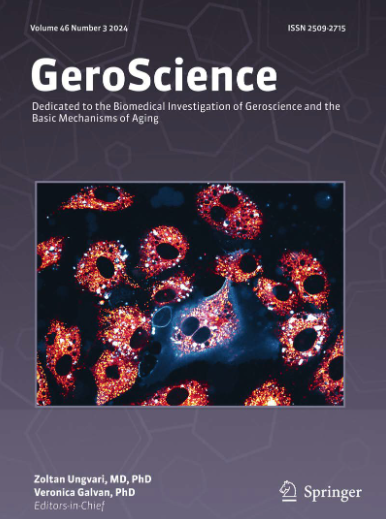Sex differences in brain glucose metabolism in alzheimer's disease: A voxel-based study.
IF 5.4
2区 医学
Q1 GERIATRICS & GERONTOLOGY
引用次数: 0
Abstract
A growing body of evidence shows significant sex differences in Alzheimer's Disease (AD) epidemiology, clinical presentation, and pathology burden; however, sex differences in neuroimaging biomarkers remain underexplored, prompting recent calls to action for more targeted research in this field. We analyzed static brain positron emission tomography (PET) imaging with 2-[18F] fluoro-2-deoxy-D-glucose (FDG) from 247 elderly individuals with AD dementia, including 151 women and 96 men. Voxel-based analysis was used to detect reductions in FDG uptake in each sex relative to a publicly shared normative database and to identify sex differences in FDG uptake within the AD cohort. Both sexes exhibited glucose hypometabolism in AD-vulnerable regions, including the parieto-temporal cortex, posterior cingulate, hippocampus, parahippocampal gyrus, and frontal lobes (PFWE ≤ 0.001 in women and ≤ 0.013 in men). Sex differences in regional FDG uptake were observed in both directions, with greater hypometabolism in limbic and frontal regions in women (PFWE ≤ 0.023) and in parietal cortices in men (PFWE ≤ 0.008). The sex-specific distribution of hypometabolism, with more pronounced anterior involvement in women and posterior involvement in men, aligns with known differences in brain reserve and hormone-sensitive regions. This pattern suggests that neurophysiological and neuroendocrine aging may contribute to AD neuropathology in a sex-dependent manner. Recognizing these variations could refine diagnostic approaches and inform the development of sex-specific therapeutic strategies.阿尔茨海默病脑糖代谢的性别差异:基于体素的研究
越来越多的证据表明,阿尔茨海默病(AD)的流行病学、临床表现和病理负担存在显著的性别差异;然而,神经成像生物标志物的性别差异仍未得到充分探索,这促使人们最近呼吁在这一领域开展更有针对性的研究。我们分析了247例老年AD痴呆患者的2-[18F]氟-2-脱氧-d -葡萄糖(FDG)静态脑正电子发射断层扫描(PET)成像,其中包括151名女性和96名男性。使用基于体素的分析来检测相对于公共共享的规范数据库中男女FDG摄取的减少,并确定AD队列中FDG摄取的性别差异。在ad易感区域,包括顶叶颞叶皮层、后扣带、海马、海马旁回和额叶,两性均表现出葡萄糖代谢低下(PFWE女性≤0.001,男性≤0.013)。在两个方向上,FDG摄取区域的性别差异都存在,女性的边缘和额叶区域(PFWE≤0.023)和男性的顶叶皮质(PFWE≤0.008)的低代谢更大。低代谢的性别特异性分布,女性更明显的前侧参与,男性更明显的后侧参与,与已知的大脑储备和激素敏感区域的差异相一致。这种模式表明神经生理和神经内分泌老化可能以性别依赖的方式促进AD神经病理。认识到这些差异可以改进诊断方法,并为性别特异性治疗策略的发展提供信息。
本文章由计算机程序翻译,如有差异,请以英文原文为准。
求助全文
约1分钟内获得全文
求助全文
来源期刊

GeroScience
Medicine-Complementary and Alternative Medicine
CiteScore
10.50
自引率
5.40%
发文量
182
期刊介绍:
GeroScience is a bi-monthly, international, peer-reviewed journal that publishes articles related to research in the biology of aging and research on biomedical applications that impact aging. The scope of articles to be considered include evolutionary biology, biophysics, genetics, genomics, proteomics, molecular biology, cell biology, biochemistry, endocrinology, immunology, physiology, pharmacology, neuroscience, and psychology.
 求助内容:
求助内容: 应助结果提醒方式:
应助结果提醒方式:


